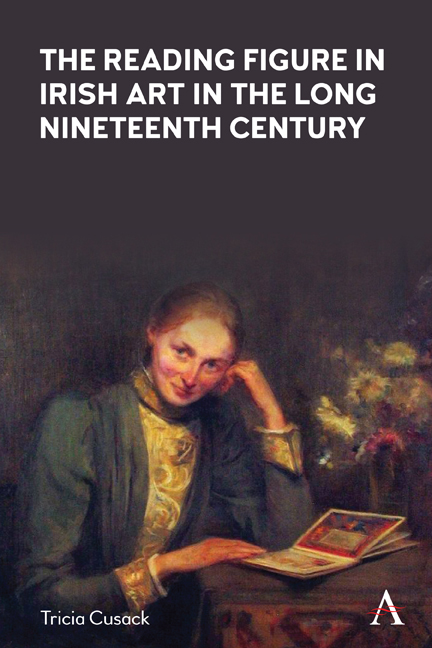Book contents
- Frontmatter
- Contents
- List of Figures
- Acknowledgements
- Introduction
- 1 Imperial Man, Manly Nationalism and the Unmanly Reader
- 2 ‘Creatures of a Different Breed’: Women Readers and Patriarchal Discourse
- 3 The Shaping of the New Woman in Ireland
- 4 The Silent Reader and the Fictive Viewer
- 5 A Room of Her Own: Four New Women in Dublin
- Conclusion
- Notes
- Works Referenced
- Index
5 - A Room of Her Own: Four New Women in Dublin
Published online by Cambridge University Press: 27 April 2022
- Frontmatter
- Contents
- List of Figures
- Acknowledgements
- Introduction
- 1 Imperial Man, Manly Nationalism and the Unmanly Reader
- 2 ‘Creatures of a Different Breed’: Women Readers and Patriarchal Discourse
- 3 The Shaping of the New Woman in Ireland
- 4 The Silent Reader and the Fictive Viewer
- 5 A Room of Her Own: Four New Women in Dublin
- Conclusion
- Notes
- Works Referenced
- Index
Summary
Virginia Woolf famously stated that ‘a woman must have money and a room of her own if she is to write fiction’. To be creative, women needed to possess both money and personal space. Woolf herself worked at the few odd jobs available to women until in 1918 aged 36 she received a legacy of five hundred pounds a year from her aunt:
That five hundred a year stands for the power to contemplate [and] a lock on the door means the power to think for oneself […] Intellectual freedom depends upon material things. […] And women have always been poor […] Women have had less intellectual freedom than the sons of Athenian slaves.
Woolf in 1929 wrote of her anger when she had attempted to enter a Cambridge library while preparing lectures for Newnham and Girton Colleges and been told that ‘ladies are only admitted to the library if accompanied by a Fellow of the College or furnished with a letter of introduction’. Although Woolf had achieved financial independence, she was still subject to patriarchal hegemony. In Ireland a little earlier, as in England, a ‘room of her own’ in which to write, read or paint was something even upper-or middle-class women often lacked, while men possessed a private study or personal studio. For example, when Lolly and Lily Yeats lived with their family in Bedford Park, London, the house had ‘room for only one member of the family to have a separate study and William [their brother, W. B. Yeats] was the fortunate one’. Lolly and Lily Yeats were also brought up amid persistent financial problems. To gain independence, they both found employment, and they passed their earnings home, as well as doing the housekeeping and looking after their mother. Their father John B. Yeats wrote later, ‘and all this when quite young girls, and cut off from living like other young ladies of their age and standing. They paid the penalty of having a father who did not earn enough and was besides an Irish landlord.’ As middle-class working women, the Yeats sisters might be seen as part of a movement for change that was evident in this period, for instance, in the political campaigns for women's rights.
- Type
- Chapter
- Information
- The Reading Figure in Irish Art in the Long Nineteenth Century , pp. 111 - 134Publisher: Anthem PressPrint publication year: 2022



